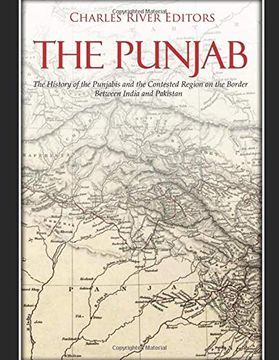The Punjab: The History of the Punjabis and the Contested Region on the Border Between India and Pakistan (en Inglés)
Reseña del libro "The Punjab: The History of the Punjabis and the Contested Region on the Border Between India and Pakistan (en Inglés)"
*Includes pictures*Includes contemporary accounts*Includes online resources and a bibliography for further readingBritish India ultimately covered some 54 percent of the landmass and 77 percent of the population. By the time the British began to contemplate a withdrawal from India, 565 princely states were officially recognized, in addition to thousands of zamindaris and jagirs, which were in effect feudal estates. The stature of each Princely State was defined by the number of guns fired in salute upon a ceremonial occasion honoring one or other of the princes. These ranged from nine-gun to twenty-one-gun salutes and, in a great many cases, no salute at all.The Princely States were reasonably evenly spread between ancient Muslim and Hindu dynasties, but bearing in mind the minority status of Muslims in India, Muslims were disproportionately represented. This tended to grant Muslims an equally disproportionate share of what power was devolved to local leaderships, and it positioned powerful Muslim leaders to exert a similarly unequal influence on British policy. It stands to reason, therefore, as India began the countdown to independence after World War II, that the Indian Muslim leadership would begin to express anxiety over the prospect of universal suffrage and majority rule. At less than 20 percent of the population, Indian Muslims would inevitably find themselves overwhelmed by the Hindu majority, and as the British prepared to divest themselves of India, ancient enmities between Hindu and Muslim, long papered over by the secular and remote government of Britain, began once again to surface.While the conflict between India and Pakistan is multi-faceted, there has always been great division over the Punjab. The word “Punjab” derives from the Persian words “Punj,” meaning “five,” and “äb,” meaning river, combined into the “Land of the Five Rivers.” These rivers are the five major tributaries of the River Indus – the Jehlum, the Chenab, the Ravi, the Beas and the Sutlej. They flow southwest off the southern slopes of the Himalayas, meeting the Arabian Sea just south of the modern Pakistani port city of Karachi. This is the valley of the Indus River, the site of some of the oldest and most accomplished civilizations in the world. The Punjab is defined by the floodplains of the five rivers that give the area its name, and as a result, it is one of the most fertile regions of South Asia. However, since the 1947 partition of India, the “Land of Five Rivers” is something of a misnomer, as the partition not only divided India but also the Punjab. The eastern part of Punjab remained a province of India, while the western section was ceded to the newly created Pakistan. As a contiguous region, the Punjab retains its essential character, but now the Indian state of Punjab has only two rivers, the Beas and the Sutlej, and the Pakistani province has the Jhelum, Chenab and Ravi. The Punjab: The History of the Punjabis and the Contested Region on the Border Between India and Pakistan looks at the region and the origins of the Punjabis, as well as how it became one of the most contested spots in the world. Along with pictures and a bibliography, you will learn about the Punjab like never before.

